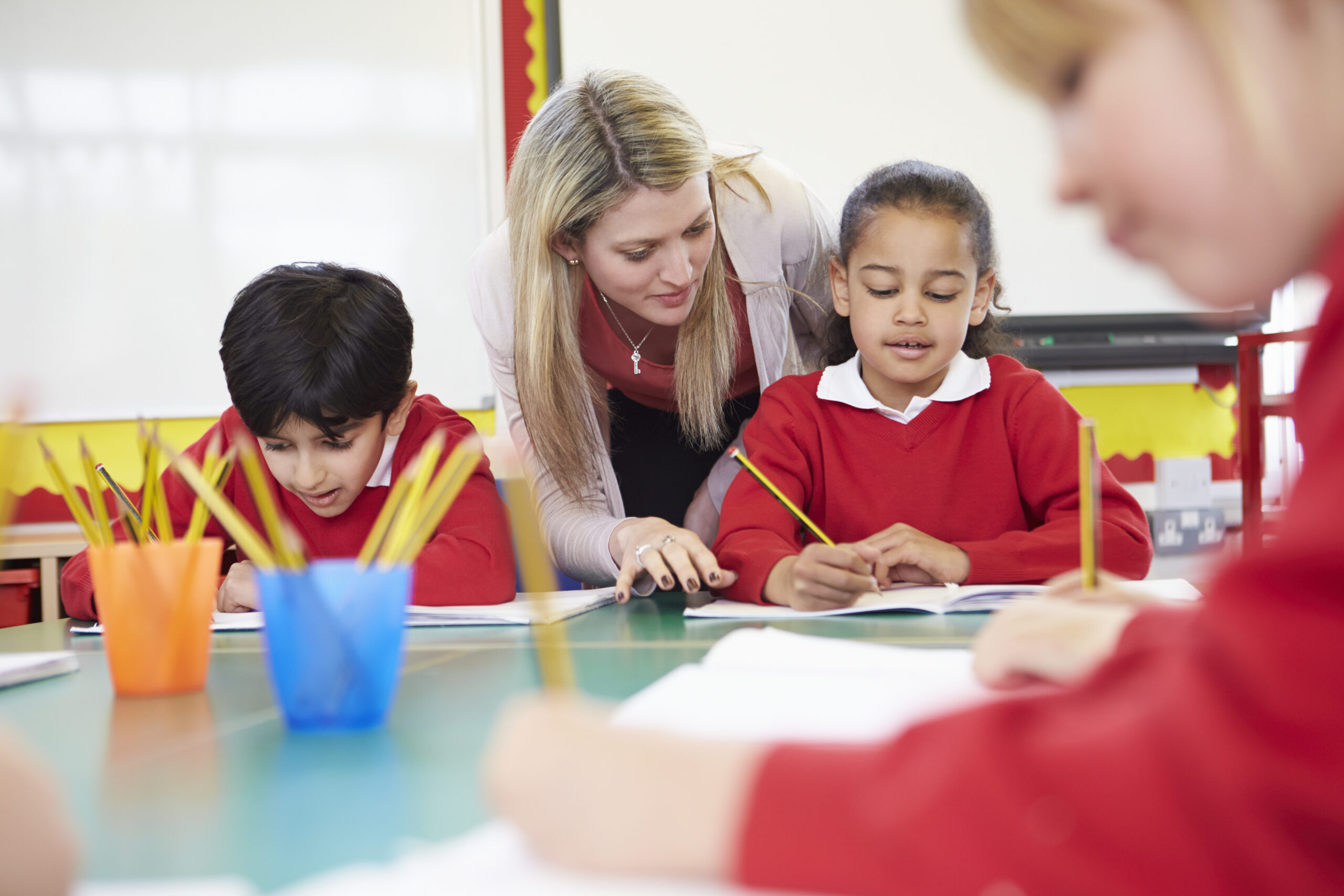
Expanding Possibilities for Inclusive Learning: In conversation with M4 student and editor Ash Smith

Ash Smith (he/him) is a second year student on our Child, community and educational psychology (M4) course, training to become an educational psychologist. He edited and wrote two chapters for the recently published book Expanding Possibilities for Inclusive Learning. Ash spoke with us about his journey to the Tavistock, inclusion, what the book is about, and who should read it.
Prior to starting training at the Tavistock, Ash was a teacher for 11 years. The last four were spent as Assistant Headteacher at the University of Cambridge Primary School, a free school academy and the only primary university teaching school in the country. When asked about how he came to educational psychology Ash shared: “As part of my role I was responsible for anything pastoral: safeguarding, behaviour, domestic abuse and attendance. We were approached by Cambridgeshire Virtual School, a service run by the local council to support children in care, to help with the integration of a child with high needs; if she wasn’t able to integrate into our school it looked like she would have to attend a residential school. This wouldn’t have been best for her.
“I took on the role of helping integrate this young person back into school and education. I carried out extra training and became really interested in the impact of trauma and the role of attachment and the systemic influences that can help support children. It tapped into my psychology undergraduate degree, which I hadn’t touched in 10 years. One of the specialist teachers I worked closely with in the integration planning for this young person told me she applied for the M4 course. I remember being overwhelmed with jealousy that she got onto the course to become an educational psychologist. This, combined with the backdrop of Covid-19, saying yes to new opportunities and doing what you want in life, and my resparked interest in psychology and how it can help children, made me think – it’s now or never.”
Expanding Possibilities for Inclusive Learning was commissioned before Ash started at the Trust, pre-Covid-19. On how he became involved with the book Ash said: “The journey into editing was a result of being at the University of Cambridge Primary School at the right time. As the only primary university teaching school in the country we had to establish what this meant ourselves. One of the routes we went down was to become a research hub, expand the literature, and bridge the gap between theory and practice. With Routledge it was commissioned that the school would co-edit a series of books entitled Unlocking Research. That series includes a number of publications on curriculum design, professional development, democracy, creativity, and inclusion.
“The whole point was that everything was co-created, co-edited or co-written with an academic and a practicing educationalist or teacher at the time. My co-editor was Dr Kristine Black Hawkins who is Professor of Inclusive Education at the University of Cambridge. When thinking about who and what we wanted in the book, we quickly came across the irony that this book is about inclusion but we will have to exclude. Inclusion is for everyone, removing limits and barriers of access to education, but in virtue of it being a chapter book we are putting barriers in and creating sections. We took a lot of time coming to terms with that.
“I think what is so tricky about inclusion is everyone thinks they know what it is. I think what inclusion definitely is, is it’s for all and not for some. An example that comes to mind of what inclusion is not from my time as Assistant Head was when we held an inclusion coffee morning to review our policies. One Black Caribbean mum raised our policies weren’t reflective of people from different cultures and ethnicities and we thought that’s a really valid point. So we had that conversation and then moved on to how do we represent our diverse families such as same-sex parents, or transgender children or parents. The same mum then said I don’t think that should be in the policy, I don’t think my child should learn about that. I remember sitting there and thinking that is not inclusion because you can’t include one whilst then excluding another.
“The book was delayed, in part by Covid-19, as contributors initially said yes but as they were working in school during this time their priorities and attention was elsewhere. Given the content of the book is sensitive, how it’s worded, edited, and communicated is really, really important. If it’s not worded or edited appropriately enough it could run the risk of being exclusionary, offensive or blaming, which we didn’t want at all.”
As well as editing the book, Ash co-wrote two of the chapters: “Chapter one, Expanding inclusive learning in primary classrooms and schools, lays out and acts as a foreword for the whole book. It outlines what the book is about, why the book came about, why it is important and pushes the message that inclusion is for everyone. You can’t claim to be for everyone while excluding a different group, inclusion as a result is really tricky.
“Inclusion is a bit of a buzzword in education but it needs to be more than a word on a poster in a school. You have to feel it, live it and really think about it. It’s not just something that happens naturally, you have to put in the work and effort to be inclusive.”
“This chapter talks about different definitions of inclusion and where they come from, taking it from the global picture and narrowing it down to the topic of the book which is primary education and the classroom.
“The chapter I most enjoyed writing was the chapter on behaviour, Inclusive approaches for children at risk of exclusion: supporting mental health needs in primary schools. This chapter is co-authored with Lysandra Sinclair-Harding, a fellow trainee at the Tavistock in her third year. In this chapter, we present a collection of anonymised vignettes of children as an amalgamation of our experiences.
“This chapter explores how behaviour management has been quite behaviourist in approach, punitive and based on avoidance of punishment. Instead, we encourage a more inclusive approach, looking at behaviour as a form of communication; it’s our job as educationalists or teachers or those working with children to figure out what they’re saying.”
“Once we understand the more inclusive approach and how to implement it, we can then not only intervene, but actually prevent and support children in need. We argue prevention is better than intervention so rather than putting plans in place and thinking about scripts of what to do when a child behaves badly, instead, thinking about systemically changing and reframing the language that we use at school to better manage the situation. For example, rather than saying a child is ‘kicking off’, saying they need support in regulating, or rather than ‘being naughty’ they are communicating a need.
“We talk about the effects of trauma on brain and social development. Children feeling safe in relationships is massively important when they are learning in the classroom. In the book we also discuss the relational aspect between children and their caregivers, we include teachers as caregivers because there are some children that experience trauma for whom their teacher is one of the most trusted, reliable people in their life. We also cover practical reflections, because in education, you often find really theoretical or practical books, but I find practical reflections more helpful than tips for teachers because something may work in one teacher’s classroom but not in someone else’s. There’s not a one-size fits all, bridging theory and practice is more helpful as it shows the ‘why’ and once you know the theory you can adapt this practice to fit your classroom. A lot of our suggestions and practical reflections are about planning and doing things before the child escalates or is disregulated, but also if it gets to that point, what you can do to support the child to re-regulate.
“Supporting children at risk of being excluded from school is really difficult, emotionally draining, and mentally taxing so we also make a plea for supporting adults in schools. As educational psychologists we get supervision weekly to help debrief and reflect, whereas teachers and SENDCOs (special educational needs and disabilities coordinators) don’t, which I think is absolutely awful because these are the people who are there every single day with and for these children. They are often the ones getting sworn at or hit, spat on or having a chair thrown at. Where do you put that? There’s no one for them to talk to or be supervised by so in the book make a plea:
“To support children you need to support the adults in the system around them because you can’t pour from an empty cup. To keep giving to children you need to look after yourself as well.”
Ash elaborates on how the backdrop to the book is higher-level system change: “The chapters cover key areas, behaviour, LGBTQI+ rights, pupil voice, parent community, but as the book continues we go higher and higher. We start off at the individual level with the child, then we go to groups, to leading inclusive practice, and then we think about big national systemic ecosystem ways of looking at things. This wasn’t our intention, but this developed as we were writing the chapters, editing and starting to put the structure of the book together. It should be a systemic issue rather than just trying to help that one child. As a leader I always used to say to my team, “what is good for the goose is good for the gander”. So, if you are teaching an autistic child, adapting practice will also help every child. No child will be like “oh that’s really unhelpful for me” if you’re making the classroom more inclusive. Sometimes teachers get frustrated if they see it as having to do something for one child, and another, and another, and another, so they think they’ve got four different jobs to do, but actually with a slight reframe you can shift something in your practice that helps all four at the same time. It is daunting if you have to think about 30 children individually, rather than what can I do for all of these 30, that is a lot more manageable and more effective and more inclusive.”
On who may benefit from reading the book: “It is for anyone in education who considers themselves an inclusionist. The target audience for the series is teachers and student teachers but I think educational psychologists would find it really helpful, also policy makers, or school leaders relating changes in their school could benefit.”